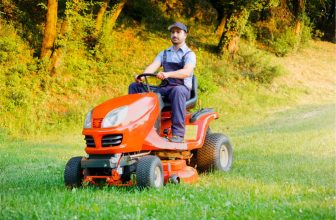What is centipede grass seed
Centipede grass seed refers to the small, dry seeds of the centipede plant (Eremochloa ophiuroides). Centipede is a warm-season grass species that is commonly used for lawns in certain regions, particularly in the southeastern United States. It is known for its low-maintenance requirements, slow growth rate, and ability to thrive in a variety of zones.
Centipede seed is used to establish new lawns or to overseed existing lawns with this grass variety. When planted and cared for properly, the seed will germinate and grow into a lush, green lawn. However, it's important to note that centipede grass seed can take some time to fill in, as it has a slower growth rate compared to other grass types.
To successfully grow centipede grass, it's crucial to prepare properly, provide adequate watering and sunlight, and follow recommended planting and maintenance guidelines for your specific location and climate. Keep in mind that centipede may not be suitable for all climates, so it's important to research and choose the right grass variety for your specific conditions.
What is the best time to plant centipede grass seed
The ideal time for planting can vary based on the specific conditions in your region. Here are the general guidelines for planting centipede grass seed:
Late Spring to Early Summer (May to June)
This is considered the primary planting window in areas with mild winters and warm summers. Planting during late spring to early summer allows the grass to cover the lawn before the heat of summer arrives. The soil is warm enough for germination, and the young grass plants have a growing season ahead to create a strong root system before winter.
Late Summer to Early Fall (August to September)
In regions with hot summers, planting centipede seed in late summer to early fall can be beneficial. The soil is still warm, but the temperatures are beginning to cool down. This planting time gives the grass a chance to take hold before winter while avoiding the stress of extreme heat.
Here are some additional tips for successful centipede seed planting:
Soil Preparation
Prepare the soil by removing debris, tilling the top layer, and ensuring good drainage. Centipede grass seed prefers slightly acidic soils with a pH of around 5.0 to 6.0.
Seedbed Preparation
Create a smooth and level seedbed for optimal seed-to-soil contact. Rake the soil to break up clumps and create a fine texture.
Seed Distribution
Distribute the grass seeds evenly over the prepared seedbed. Using a broadcast spreader can help achieve even coverage.
Light Raking
After seeding, lightly rake the soil to cover them with a thin layer of soil. This helps protect them and keeps them in place.
Watering
Water the seeded area gently and consistently to keep the soil consistently moist during the germination period. Avoid overwatering, as it can lead to poor germination.
Germination
Centipede grass seeds can take a few weeks to germinate. Be patient and continue to provide consistent moisture.
Mowing
Once the grass reaches a height of about 1 to 1.5 inches, you can mow it for the first time. Avoid mowing too short, as centipede grass seed prefers a slightly longer height.
It's important to adjust your planting time based on your local climate and conditions. If you're unsure about the best time to seed centipede grass seed in your specific area, consider contacting your local agricultural extension office or seeking advice from experienced local gardeners or landscapers.
What is the best Centipede seed
Determining the best centipede grass seed can depend on various factors such as your location, climate, soil type, and specific needs. However, there are a few popular and well-regarded centipede grass varieties on the market today that are commonly recommended:
TifBlair Centipede Seed

TifBlair Centipede grass seed has been generally well-regarded in the landscaping and gardening community. It's known for its improved cold tolerance compared to traditional centipede grass varieties, making it a popular choice in areas where colder winters might be a concern. This is coated seed. Coated centipede grass seed refers to centipede grass seeds that have been coated with various materials to improve their germination and establishment. This is a great grass seed.
PROS
CONS
Mayberry Centipede Seed

Mayberry Centipede seeds has been gaining attention for its shade tolerance and other characteristics. Keep in mind that the perceptions of any grass variety can evolve over time, so it's always a good idea to check for the most recent reviews and experiences from gardeners and landscapers in your specific region. Like the other common centipede grass seed on this list this is a coated seed.
PROS
CONS
Scotts Turf Builder Centipede Grass Seed

Scotts is a well-known brand that offers various lawn care products, including grass seed blends. Scotts Centipede Grass is recognized for its fine texture, cold tolerance, and resistance to pests and diseases. This centipede grass seed is also coated.




